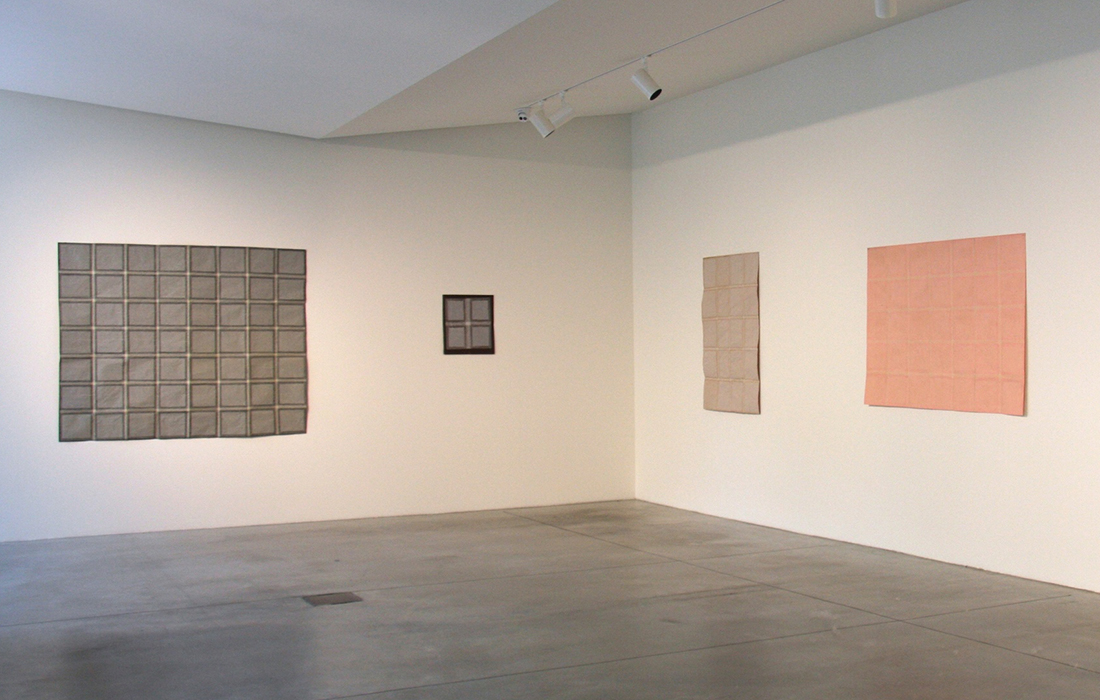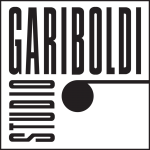May – June 2015
Luciano Bartolini Kleenex
by Alessandra Nappo
“ I always choose materials that stimulate the touch rather than the view”. In this way, Luciano Bartolini (Fiesole, 1948-1994) tries to define his attraction for highly tactile elements through the specific qualities of the materials that he chooses with care for his works. Bartolini’s almost exclusive use of paper (cut, glued, corrugated, overlapped, painted) falls precisely in the idea of the high sensibility of this material, that is symbolic and evocative. Since the early 70’s, this obsessive experimentation of different materials (different kinds of paper, color, pastel, collage) is present in every work of Bartolini, the Kleenex, a cycle in which the expressive value of the paper combined with the potential of the color, – always using it sparingly and with slight chromatic variations -, are crucial as their disposition on the support.
The majority of these works are composed of common disposable paper handkerchiefs Kleenex, serially disposed and glued on simple support of wrapping or food paper, on which at a later stage the artist spreads the color. Once the first layer of the color is applied and then reinforced with further interventions, the paper bends and the artist starts losing control of it, so that the wrinkling and accidental movements emerge.
Bartolini creates abstract compositions based on calibrated combinations of square modules which in turn originate geometrical patterns. The order and the formal rigor counterpoint the delicate texture of the paper. The Kleenex series testify the artist’s choice of using ephemeral, fragile, temporary material, which meticulous disposition on the other side contradict the sense of transiency, precariousness that notoriously characterizes it.
These combinations – never randomly assembled, but the result of an uncompromising discipline – create a fine elegance that is generated by the encounter of contrasting elements: color and no-color, calculation and unforeseen, staticity and movement (which is generated by the irregular folds of the paper), poor materials (rough paper) and precious details (the presence of gold), fullness and emptiness, horizontal and vertical features. The monotonous and uniform succession of Kleenex on wrapping paper, which is generated by the rythmic sequences and the collage technique, is crucial for the creation of the encounter and the clash of the materials: the transparency of the handkerchiefs counterposed to the opacity of the rough paper below; lightness and volatility of Kleenex counterposed to (apparent) strength of the support.
The visual grammar of Luciano Bartolini blends in itself in a unique way the imprint left by the great masters of Italian art scene of second postwar period – the expressive sensitivity of Alberto Burri and the research of Piero Manzoni appear to be the most important references for Bartolini – and suggestions from the Oriental cultures, such as the use of very thin tissue that refers directly to the suspended on wires prayer-sheets that the artist have had the opportunity to see in the temple of Bodhanath in Nepal.
Rough paper, ripples, stratifications, vibrant surfaces: every element that Bartolini includes in his works is finalized to evoke this tactile impression, to emphasize the physical relationship that he has with the material that he uses. The choice of materials – selected for their apparent banality and presented in their essential nakedness – is very important for Bartolini who wants to illustrate the fragmentary, fletting sense and something “in eternal metamorphosis”, mentioning the words of Helmut Friedel. The surface of these works, rough and wrinkled, seems to evoke – not without causing some sort of disturbing familiarity – an epitherial tissue, some sort of skin that hides beneath blood and lymph vessels.
Is there a tactile sense of the eye? The Bartolini’s Kleenex works seem to talk about this possibility. In the first instance the eye is caught by the tactile qualities of these minimal and serial structures that are asking to be explored. It is the sight that captures all the irregularities, the bumps, the plasticity of these works that anyone, so to speak, can touch with eyes.




